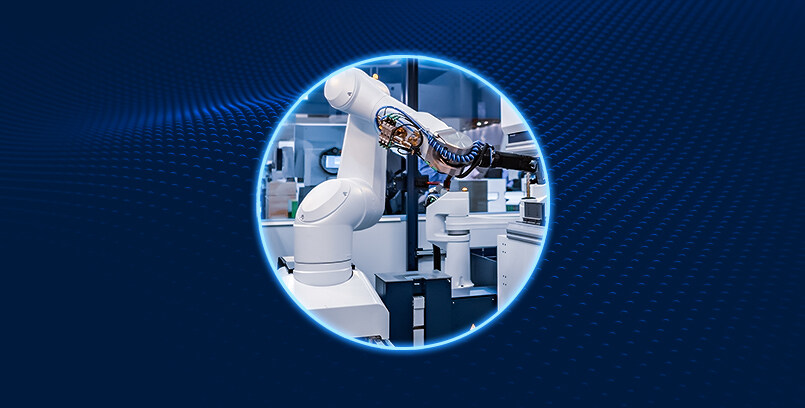Email format error
Email cannot be empty
Email already exists
6-20 characters(letters plus numbers only)
The password is inconsistent
Email format error
Email cannot be empty
Email does not exist
6-20 characters(letters plus numbers only)
The password is inconsistent

News at Linke
News from National Cable And Wire Manufacturing Company.

Exploring the Diverse World of Robot Cables: Applications, Requirements, and Innovations
Introduction
In the realm of robotics, where precision, efficiency, and reliability are paramount, cables play a crucial yet often overlooked role. These lifelines of robotic systems come in various types, each designed to serve specific functions and withstand the rigors of demanding applications. In this article, we delve into the intricate world of robot cables, exploring their types, applications, and the exacting requirements they must meet to ensure seamless operation in diverse robotic environments.
Types of Robot Cables
Power Cables
At the heart of any robotic system lies the need for power to drive motors, actuators, and other essential components. Power cables serve as the conduits through which electrical energy is delivered, making them indispensable in robotics. From supplying high currents to withstanding mechanical stress, power cables must meet stringent requirements to ensure uninterrupted operation in dynamic environments. In industrial robotics, for instance, power cables are often subjected to harsh conditions, including exposure to heat, oil, and vibration, necessitating robust construction and insulation to maintain performance and longevity.
Signal Cables
In the intricate dance of robotic motion and control, signal cables serve as the messengers, transmitting vital data between sensors, actuators, and the central processing unit. Whether conveying position feedback from encoders or facilitating communication between robotic components, signal cables must exhibit low noise levels, high signal integrity, and precise shielding to prevent interference and ensure accurate data transmission. In applications such as industrial automation and robotic manufacturing, where milliseconds can spell the difference between success and failure, signal cables play a pivotal role in maintaining operational efficiency and reliability.
Communication Cables
In an era of interconnected systems and smart technologies, communication cables form the backbone of robotic networks, enabling seamless interaction between robots, control systems, and peripheral devices. From Ethernet cables facilitating high-speed data transfer to serial communication cables enabling real-time control, the versatility of communication cables is indispensable in modern robotics. In collaborative robot (cobot) applications, for example, communication cables facilitate human-robot interaction, allowing for intuitive control and dynamic task allocation in shared workspaces.

Feedback Cables
In the pursuit of precision and accuracy, feedback cables serve as the conduits through which vital sensory information is relayed from sensors to controllers, enabling closed-loop control and adaptive behavior in robotic systems. Whether measuring position, velocity, or force, feedback cables must exhibit exceptional reliability, low latency, and high resolution to ensure responsive and precise robotic operation. In applications such as medical robotics and laboratory automation, where precise positioning and control are critical, feedback cables play a pivotal role in enabling cutting-edge advancements and breakthroughs.
Flex Cables
In the realm of robotics, where dexterity and maneuverability are paramount, flex cables serve as the flexible backbone, enabling seamless motion and articulation in robotic arms, joints, and end-effectors. Whether navigating tight spaces or executing complex trajectories, flex cables must exhibit exceptional flexibility, durability, and fatigue resistance to withstand millions of flex cycles without compromising performance. In applications such as surgical robotics and inspection systems, where precise motion and control are essential, flex cables enable unprecedented levels of agility and precision, pushing the boundaries of what robots can achieve.
Bus Cables
In the interconnected landscape of robotic systems, bus cables serve as the conduits through which data flows between multiple devices, enabling seamless integration and communication in complex networks. Whether connecting sensors, actuators, or controllers, bus cables must exhibit compatibility with various protocols and standards, enabling interoperability and scalability in robotic systems. In applications such as warehouse automation and logistics, where multiple robots collaborate to perform complex tasks, bus cables facilitate coordinated motion and control, maximizing efficiency and throughput.
Conclusion
In conclusion, the world of robot cables is as diverse as it is indispensable, with each type playing a vital role in enabling the seamless operation of robotic systems in diverse applications. From power cables delivering the energy needed to drive motion to feedback cables providing the sensory feedback essential for precision control, the importance of cables in robotics cannot be overstated. As robotics continues to evolve and push the boundaries of what is possible, the demand for innovative cable solutions that meet the exacting requirements of modern applications will only continue to grow. By understanding the types, applications, and requirements of robot cables, we can unlock new possibilities and empower the next generation of robotic systems to achieve unprecedented levels of performance and capability.

